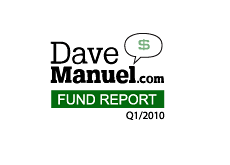Trading Secondary Stock Offerings for Profit
Becoming a successful trader is all about finding edges. Once you find an edge, you need to exploit it over and over and over until it doesn't work anymore. You don't need to re-invent the wheel every day and come up with brilliant new trading strategies all the time; you need to find something that works and stick with it until the data tells you that it doesn't work anymore.
One of my favorite trading strategies over the years has been trading secondary stock offerings. The profit per play isn't that outstanding (generally around 1% or so) but considering that there are hundreds of offerings per year and you only hold the stock for one day, it's certainly not bad and adds up quickly.
The reason that I like buying stocks on the day that they price their secondary stock offering is because you generally have the brokers on your side in the trade. How so?
Let's say that XYZ is trading on the NYSE at $39 per share. They announce a secondary stock offering that will be underwritten by various brokers, including Goldman Sachs and Bear Stearns. The night before the offering is priced, the company announces that there will be 5 million shares priced at $36.50. The stock, which had closed at $38, gaps down the following morning to $36.50. Generally speaking, the stock will gap down to just around the price of the offering.
I have found that usually the stock will somewhat recover off the gap down. Because the brokers have a financial interest in the offering, they normally make sure that the offering price is the floor for the stock for the few days following the offering. Meaning, if the offering prices at $36.50, chances are you won't see the stock trade below that the day of the offering. If you watch your Level II screens, you will see a huge presence from the brokers who are underwriting the stock, and they are almost always on the bid, propping the stock up and making sure it doesn't drop below the offering price.
So ok, we've established that there is usually a floor in the stock on the day of the offering. But what would make it trade higher?
There are a few reasons. To start, there is normally a "buy the rumor, sell the news" type of situation that occurs. Meaning, a company will announce their intentions to have a secondary offering, and the stock will trade lower, as investors know that secondary offerings almost always price below the current value of the stock in order to lure in investors for the seconday offering, not to mention any dilution concerns. So the stock will trade lower into the offering, and when the pricing occurs, normally there is a "relief rally" on the day of the pricing.
Also, the secondary offering will normally improve the finances for the company pricing the offering. Normally offerings occur to raise cash for general corporate purposes or maybe to finance an expansion of some sort.
The biggest reason that a stock will rise on the day of its offering is due to the presence of the brokers. Having a broker financially tied to a stock will normally mean good things for the company, in the form of favorable ratings and positive chatter. Most brokers have especially high praise for companies that they are in business with, which will normally bode well for the stock.
The best thing you can do is sign up to briefing.com and note the secondary stock offerings that occur on a daily basis. Watch how they trade for a month or two, and see if you don't see a pattern of up days once the offering prices. Just a tip for all of you stock traders out there.
Filed under: Stock Market Education | General Knowledge



